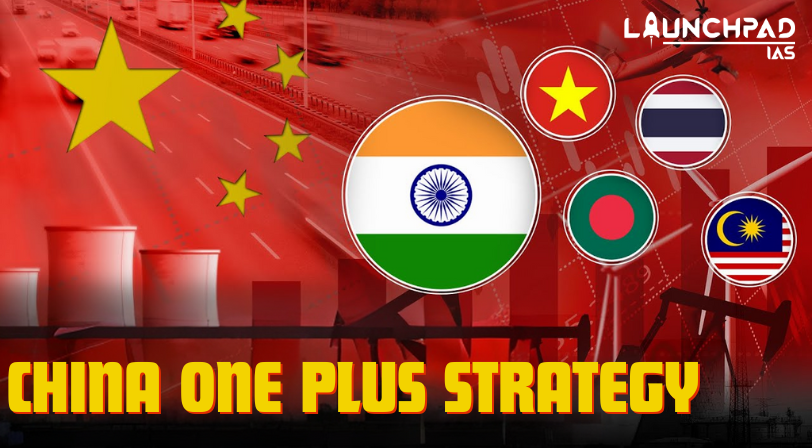About
- China Plus One Strategy, where Multinational Firms are moving to other countries, in addition to China.
- For many years, western companies have invested in China, drawn in by their low production costs, and enormous domestic consumer markets.
- Some Asian Countries have put forward plans to attract overseas investment as companies look for another center of production or distribution. Thailand, Malaysia, and Vietnam have introduced preferential policies for overseas firms investing in the country.
Benefits for India
India is likely to be the next best candidate to benefit from this altered situation owing to its competitive advantage in various industries, favorable factors of production, conducive business environment, and incentivizing government policies.
Potential Sectors that can Benefit from China Plus One Strategy
Textile
- Textiles are the second largest employer after agriculture in India.
- It is a labor-intensive sector as India has cheap labor comparatively.
- It Contributes 5% to India’s GDP, 7% of industrial outputs in value terms, and 12% of the country’s export earnings. Therefore, it will always be the focus/priority of the government’s industry benefit list.
- Other benefits:
- Abundance of raw material
- Presence across the entire value chain
- The second largest manufacturer of textiles and clothing in the world.
Metals
- India has a competitive advantage in steel and aluminum on account of an adequate supply of raw materials and a growing market for finished goods.
- The PLI Scheme for the specialty steel industry will apply for 5 years from 2023-24 onwards.
- It is expected to bring in an investment of approximately Rs. 40,000 cr and a capacity addition of 25 mn tonnes for specialty steel.
Chemicals
- With a 35% market share in global exports, China is slowly losing its momentum due to changes in trade dynamics and stringent environmental norms.
- These changes in China will help India increase its global market share from 3% to 9% as expected in the coming decade.
- The Indian chemical industry grew by 11.7% CAGR over CY 2015-20 and is valued at around $32 bn. It is expected to grow at a CAGR of 12.4% in the next 5 years.
Pharmaceuticals
- Indian Generic medicines have a 20% share in global supply by volume.
- China and India are the sources of 75-80% of the APIs imported to the US.
Semiconductors
- U.S.-China tensions over Taiwan and the supply chain blockages owing to the Russia-Ukraine conflict have led major economies to enter the chip-making sector with a renewed push.
- The Indian government also recently announced the PLI and DLI schemes as major steps towards building a semiconductor ecosystem in the country.
Suggestions & Way Ahead
- Establishment of the global supply chain: The establishment of the global supply chain was built over some time. The experience of some of these companies in India is relatively less.
- Understanding the expectations: There are specific expectations of quality in every country. So, a good bit of time has to be spent in understanding these quality expectations of global customers in different geographies.
- Balancing domestic supply:
- Also, Indian firms will have to continue to support global companies even if domestic demand goes up.
- It will have to be a long-term separate business that they are committing themselves to.
- Various initiatives by the Indian government:
- The government also clenched the situation and took further steps in the same direction by introducing PLI schemes for multiple sectors like textiles, and electronics, raising import duties on some products, and so on.
- The PLI scheme is a big push towards manufacturing locally and localizing technology, strengthening our own manufacturing.


